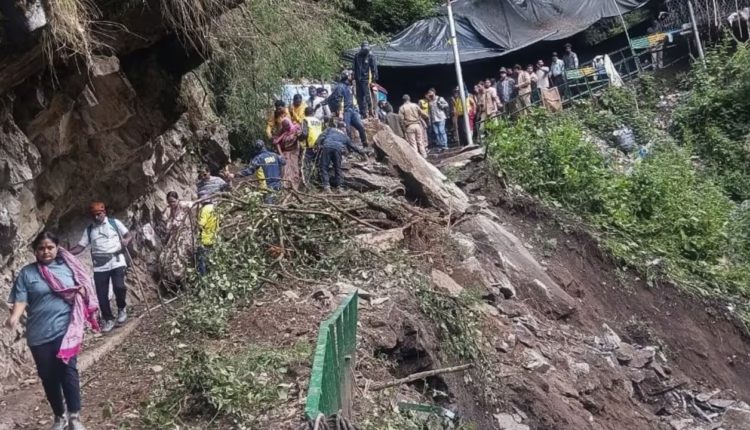Uttar Pradesh Mourns 11 Dead in Vaishno Devi Landslide: Questions Mount Over Government Inaction Amid Monsoon Havoc
LUCKNOW — Uttar Pradesh is in mourning after 11 residents of the state lost their lives and seven others were injured in the catastrophic landslide that struck the Vaishno Devi pilgrimage route in Jammu and Kashmir’s Reasi district on Tuesday.
The disaster, which has so far claimed 34 lives overall and left at least 20 injured, has sparked outrage and questions over why pilgrims were allowed to proceed despite the escalating monsoon fury that has already unleashed devastation across several northern states.
Chief Minister Yogi Adityanath expressed condolences to the families of the deceased and announced ₹4 lakh in financial assistance for each bereaved family, according to a government statement.
He also directed officials to ensure the safe return of the bodies to their hometowns.
But beyond expressions of grief, the tragedy has laid bare the apparent failure of local authorities, the meteorological department, and state administrations to preempt such disasters.
With monsoon-triggered landslides, flash floods, and cloudbursts repeatedly making headlines, why were thousands of pilgrims still allowed to climb the treacherous route to the shrine?
Lives Lost: A Grim Toll from Uttar Pradesh
The victims include three from Agra — Bhawna (12), Sunita (35), and Sejal (2); three from Muzaffarnagar — Kartik (22), Anant (6), and Deepesh Kumar (age not listed). Others include Chandni (30) from Lucknow/Ghaziabad and Neera (35) from Bareilly/Meerut.
Three other victims, Mamta Devi (45), Ram Viri, and Anjali (25), remain unidentified by hometown, further highlighting gaps in disaster response and coordination.
The seven injured pilgrims from UP — Sangita, Umang, Kamlesh, Vaishnavi, Purvi, Goran, and Mayank — are undergoing treatment, but their condition remains undisclosed.
A Preventable Tragedy?
While officials scramble to provide compensation and manage logistics, many are questioning the complete lack of foresight and preparedness that may have cost dozens of lives.
The India Meteorological Department (IMD) has consistently issued warnings of heavy rains, cloudbursts, and landslides across Jammu and Kashmir, yet pilgrimage routes remained open, leaving devotees exposed to fatal risks.
This disaster is not an isolated incident; monsoon tragedies have been ravaging the Himalayas and northern India every year, from Kedarnath to Himachal Pradesh, with chillingly similar images of chaos, blocked roads, and helpless rescue attempts.
“If timely restrictions had been imposed on pilgrimages, lives could have been saved,” remarked a local activist, reflecting the anger spreading across communities that are now burying their loved ones.
Systemic Negligence
Experts say this tragedy underscores a pattern of administrative negligence, where religious tourism often proceeds unchecked even during the peak monsoon, prioritizing sentiment over safety.
Local authorities had been witnessing landslides, road collapses, and flash floods in the preceding weeks.
Yet, neither the state government nor shrine authorities took decisive action to temporarily halt or restrict pilgrimage traffic, despite clear indicators of worsening weather.
This lack of proactive disaster management raises serious questions about accountability. Are religious tourism revenues being prioritized over human life?
Why were emergency evacuation measures not pre-planned and communicated? And why is India’s pilgrimage safety infrastructure still so fragile in 2025, despite lessons from countless tragedies?
Need for Urgent Reform
As Uttar Pradesh families prepare for mass cremations, and Jammu and Kashmir reels from yet another natural disaster, the Vaishno Devi landslide is now a grim reminder that faith cannot be a substitute for safety. Experts are calling for:
- Stricter weather-based pilgrimage regulation, especially during the monsoon.
- Better infrastructure, including safe shelters and advanced weather prediction systems along pilgrimage routes.
- Clear evacuation protocols and communication channels for pilgrims.
Until authorities prioritize human lives over political optics and tourism revenue, tragedies like these will continue to repeat.
#VaishnoDeviLandslide #MonsoonTragedy #PilgrimSafety #GovernmentAccountability #DisasterPreparedness #UttarPradesh #JammuAndKashmir #FaithAndSafety

